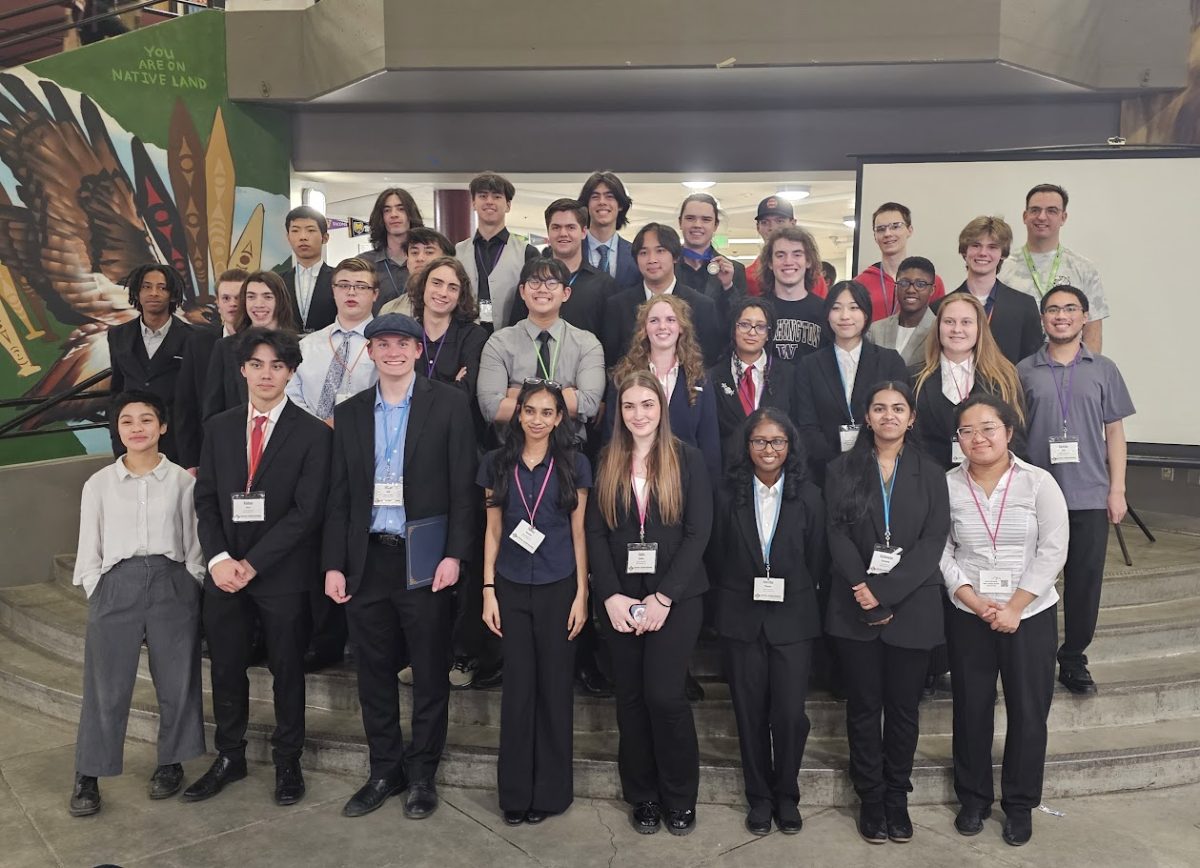High school students in Washington state, beginning with this year’s sophomores, must acquire 24 credits over four years to graduate high school. This recent change, put in place by the Washington State Board of Education after a 2014 decision by the state legislature, was implemented in the 2017-2018 school year. Under the current six-period schedule used by the Edmonds School District, students cannot fail a single class to graduate on time. In light of this situation, the district is considering moving away from a six-period day to allow students more credit earning opportunities.
The ESD has assembled a 24 Credit Task Force to discuss the new graduation requirements. This 44-person task force, composed of students, teachers, administrators and families, meets monthly to examine potential changes to the district’s high school scheduling that will provide students with more opportunities to meet graduation requirements and take elective courses. The information gathered will be used in the Spring by the ESD Board of Directors for potential schedule changes.
Principal Greg Schellenberg is a member of the 24 Credit Task Force, and expressed concerns over the potential negative impacts the increased graduation requirements will have on student success.
“If you fail a single class, that will put you in jeopardy to not graduate on time,” Schellenberg said. “Even one F can put you behind.”
He has also voiced concerns about potential negative effects current graduation requirements will have on students not at risk of failing a class.
“The other thing that I think people don’t really think about with requiring 24 credits to graduate is that even students who are doing fine or are highly involved in a number of activities will need to make a choice,” he said. “You might need to choose between your fourth year of orchestra or a required class. Even somebody who’s taking AP, AP, AP might still have to make some forced choices or take a class online to meet all their requirements.”
Assistant Superintendent Greg Schwab, who leads the 24 Credit Task Force, believes that a schedule change of some sort will likely be implemented by the district to give students greater opportunities for success.
“I know that our board and superintendent are very committed to making sure we are doing everything possible to ensure that we have a schedule model that can help students to meet the 24 credit requirements and also provide access to increase elective opportunities for students,” Schwab said. “With that in mind, I don’t know how we can accomplish those things without some kind of a change in our schedule.”
Schwab further expressed the problems accompanying a 24 credit schedule.
“In our current six-period day schedule model, there is simply not capacity for students to meet the 24 credit requirement,” he said. “One failed class puts a student at risk of not graduating. And students have to go outside of the school day to recover credit or take additional courses.”
Requiring students to pay for credit recovery outside of standard school times could put excessive burdens on lower income families.
“These are equity issues for us, as students should not have to take extra classes that cost them money because we have implemented a credit requirement that cannot be met in our current schedule model,” Schwab said.
While research on the impact different schedule models have on graduation rates is contradictory, Schwab believes this is not the angle from which the district should approach the high school scheduling issue.
“I am trying to approach this from a ‘what are our values?’ standpoint,” Schwab said. “I believe we need to have a schedule model that allows for students to meet the grad requirements within the school day, that allows opportunities for enrichment, remediation and credit retrieval within the school day, that allows students to take electives without having to make choices between programs.”
Schellenberg said the schedule changes would also be beneficial to fail classes as well.
“This is also about giving students the extra opportunity to do things that will further their passions and allow them to complete programs,” Schellenberg said. “That’s why, instead of ‘credit retrieval,’ I prefer to say ‘credit earning opportunities.’”
Schedule models the district has considered adopting throughout this process include a seven-period day, a seven-period modified block schedule, a five-period trimester system, an eight-period block schedule alternating each semester and an eight-period block schedule alternating daily. Currently, the list has been narrowed down to three proposals: a seven-period day, an eight-period block schedule alternating daily and a five-period trimester system.
A seven-period day merely extends the school day by adding an extra period. However, the other two proposals would lead to more drastic changes. An AB block schedule would have students take four periods one day and four periods the next day while a five period trimester would split up the school year into 60 day chunks, with five periods each.
A full year class in the current schedule would occupy two trimesters in the five-period trimester system. However, some electives, such as journalism or band, would be allowed to stay as year-long courses.
“You don’t want to have your top musicians take a trimester off,” Schellenberg said.
A seven-period day would provide 28 credits over four years, an eight-period block schedule would provide 32 credits over four years and a five-period trimester system would provide 30 credits over four years.
Despite the broader changes of the block schedule or trimester system, Schellenberg believes the seven-period day to be the most difficult schedule to implement.
“The one that strikes me as the most challenging the seven-period day because our students are doing a lot right now without adding another class,” Schellenberg said.
Additionally, a seven-period day would shorten class periods and potentially eliminate PASS periods, so the added period would not extend the school day by a full class period. However, the implementation of this model would still extend the school day.
If changes to the ESD’s high school schedules are made, they will likely be implemented in the 2020-2021 school year, when the current sophomores are entering their senior year.
“That gives teachers a year to adjust, if it’s a block schedule or trimester it will require different instruction standards and a lot of work to get prepared for,” Schellenberg said. “I think the decision will be made by the end of this year and then there will be one year to prepare.”
Changes will not be implemented immediately due to several concerns regarding the impacts generated by moving away from the six-period schedule.
“I think the major concerns are going to be cost,” Schwab said. “There will be a cost associated with a schedule change. But again, our board is very committed to this process.”
Schwab also reemphasized the preparation period teachers would need before entering into a new schedule format.
“We need to make sure there is time to provide training and professional development for staff as they prepare for a change,” Schwab said.
The district is aware of the issues an alternating block or trimester system would generate for students preparing for Advanced Placement exams in May, and they are researching ways to minimize any barriers to student success. They are currently looking into how surrounding school districts have attempted to minimize the effects of schedule changes on AP students.
“For example, the Federal Way SD has all four of their high schools on an alternating block schedule and they have come up with ways to support AP students’ needs to be prepared for the tests in May,” Schwab said.
Currently, Edmonds-Woodway High School and Meadowdale High School use a block schedule while MTHS and Lynnwood High School do not. The adoption of a new schedule system would lead to the implementation of a district-wide high school schedule.
The district will provide several student surveys so ESD high school students can voice their opinions on the preferred schedule model.








